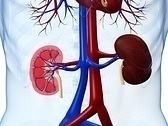Symptoms of a Ruptured Spleen
The spleen is a highly important part of the human body as it serves many different vital functions including the production of antibodies, destruction of bacteria as well as the removal of damaged platelets and blood cells. One of the major causes of this serious health problem is severe abdominal trauma. By learning the different treatments, diagnosis and symptoms of ruptured spleen, patients can easily manage the severe pain that is usually associated with this serious medical condition.
Signs of Ruptured Spleen
There are various symptoms of ruptured spleen. Tenderness and abdominal pain are classic signs that people are suffering from this kind of serious health problem. In case of internal bleeding, patients usually feel confused or lightheaded, mainly because of the drop in blood pressure. Other major symptoms include fainting and blurred vision, which are common especially in severe cases. Most of the time, patients do not only feel abdominal pain, but they also experience tachycardia, hypotension as well as left shoulder pain.
Ruptured Spleen Diagnosis
With the help of proper diagnosis, patients can easily identify the minor and major symptoms of a ruptured spleen. More so, it can help determine the actual cause of the problem, as well as the possible treatments for such medical condition. Early on, people can determine right away if they are suffering from ruptured spleen with the help of various diagnostic tests and procedures. Before considering surgery, patients may want to undergo a simple physical examination.
In special cases, doctors test fluid samples straight from the abdomen of patients to determine if there is presence of blood. Of course, performing imaging tests on patients are necessary to identify possible causes of the problem as well as rule out other medical possibilities. One of the most trusted procedures when it comes to ruptured spleen diagnosis is the CT scan.
Ruptured Spleen Treatment
One of the top treatment options for a ruptured spleen is surgery. Another possible alternative is splenic angioembolization, which is a good solution for the fluid resuscitation of transient responders and stable responders. In severe cases wherein there are clear signs of hemodynamic instability as well as ongoing bleeding, patients have the option of undergoing surgical therapy. Medical experts may also perform exploratory laparotomy, which is a good procedure for the removal, repair or staging of the spleen.
In order to reduce the chances for iatrogenically induced problems, the anesthesiologist must establish a good communication with the patient. For those who wish to have their spleens removed, preventive antibiotics are highly recommended to reduce their risks of acquiring different kinds of infections.
For more information on Symptoms Of Ruptured Spleen read:







